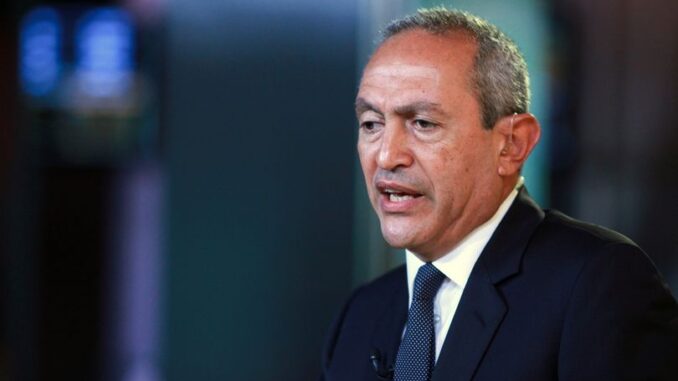
Nassef Sawiris is correct as Aston Villa financial truth exposed amid FFP threat
Nassef Sawiris is correct as Aston Villa financial truth exposed amid FFP threat
Sawiris, co-owner of Aston Villa, disclosed this week that he is exploring legal action against the Premier League over profit and sustainability rules (PSR).
Villa, who finished fourth in the Premier League last season and earned a spot in next season’s lucrative and expanded Champions League,
is reportedly one of several teams that will have to sell certain players this summer in order to meet PSR compliance and avoid potential punishments.
PSR will be replaced at the end of the 2024/25 season by financial controls based on UEFA’s squad cost ratio rule,
as well as the implementation of backup financial restrictions through a wage cap.
Sawiris, the co-chief of Villa owners NSWE, lambasted PSR in an interview with the Financial Times.
According to Sawiris: “Some of the rules have actually resulted in cementing the status quo more than creating upward mobility and fluidity in the sport.
“The rules are incomprehensible and detrimental to football.
“Managing a sports team has become more akin to being a treasurer or a bean counter than focusing on what your squad requires.
“It’s more about making paper profits than actual profits. “It becomes a financial game rather than a sporting game.”
Sawiris’ rage stems from the fact that Villa cannot put the pedal to the metal this summer and build on the success
they had last season through increased spending in the summer transfer window.
PSR regulations allow clubs to lose a total of £105 million over three years,
with permitted deductions including infrastructure, academy, women’s game, and community projects.
The pandemic’s impact was also an eligible deduction, with the 2019/20 and 2020/21 seasons combined into a single average period.
However, beginning with the following set of accounts, that period will be excluded from the assessment, affecting the three-year picture.
In Villa’s case, they declared a loss of £119.6 million after tax for the fiscal year ended May 31, 2023.
Villa decided to extend the current fiscal year to 13 months,
with the year ending on June 30 rather than May 31 as previously scheduled.
It was a manoeuvre done to buy the villa a little more time to get their house in order and create some headroom when it came to PSR compliance.

Villa’s loss for the 2022/23 season was the result of a minor £400,000 profit the previous year,
as well as the averaged two-year, pandemic-impacted 2019/20 and 2020/21 financial seasons,
during which the club lost around £68 million before tax. Despite losses of approximately £187 million,
Villa can deduct considerable amounts from those losses,
including up to £56 million from the impact of the pandemic over the two aggregated years.
According to figures presented by football finance expert Swiss Ramble,
and using allowable deduction estimates from previous seasons,
Villa were squarely at the £105 million PSR threshold after removing the pandemic-impacted years.
Douglas Luiz is one player who has been connected with a transfer away from the club,
but for Villa, it will be a matter of moving on those with a lower book value,
which means more profit can be made. Selling academy grads is the simplest way to accomplish this, as they represent pure profit.
Villa will not have the same market flexibility as the other Premier League teams moving into the Champions League next season.
Without selling, they don’t have the space to manoeuvre to bring in players who can be influential for them,
and given the rigours of European football,
which will have another two guaranteed games starting next season as part of the new Champions League model,
the club would want to operate with a larger squad.
Villa’s wages were 89% of turnover in 2022/23, ranking fourth among Premier League teams.
The three teams above them, Nottingham Forest, Leicester City, and Everton, all received sanctions for violating PSR during that time period.
Villa, who failed to raise the PSR threshold to £135 million earlier this month,
will know what they need to do to ensure PSR compliance by the end of the current fiscal year,
but even after that, the focus will be on continuing to compete
while lowering the squad cost ratio to around 85%, which can be accomplished through player trading, wage reduction, and revenue growth.
Revenues will increase as a result of Champions League football next season, but so will the salary bill due to bonus payments,
and getting the calibre of players they seek will be costly.
The advantage for the largest sides has already been baked in owing to financial constraints,
and removing PSR and transitioning to new rules will do little to alleviate the imbalance.
Sawiris and co-owner Wes Edens have considerable riches, but they are unable to carry out the Villa plan in the manner that they would prefer,
and this is unlikely to alter even with Champions League football.
Get more related news on https://sportviewers.com

Leave a Reply